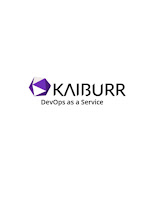In today's rapidly evolving technological landscape, DevSecOps Governance has become a critical component for ensuring the security and efficiency of software development and deployment processes. As organizations increasingly migrate to the cloud, understanding and implementing robust governance frameworks is essential. This guide will delve into the value proposition of DevOps, explore cloud migration metrics, and provide actionable insights to bolster your DevSecOps strategy.
What is DevSecOps Governance?
DevSecOps Governance integrates security practices into the DevOps process, ensuring that security is embedded at every stage of software development and deployment. This approach enhances the overall security posture of an organization by:
Embedding Security from the Start: Ensuring that security is considered from the initial stages of development, rather than as an afterthought.
Automating Security Checks: Implementing automated tools to continuously monitor and address security vulnerabilities.
Fostering Collaboration: Encouraging communication and collaboration between development, operations, and security teams to streamline processes and enhance security measures.
The DevOps Value Proposition
Understanding the DevOps value proposition is crucial for effective DevSecOps Governance. DevOps combines development and operations to improve the efficiency and quality of software delivery. Here’s why it matters:
Faster Delivery: By streamlining processes and automating repetitive tasks, DevOps accelerates the development cycle, leading to quicker delivery of features and fixes.
Improved Collaboration: DevOps fosters a culture of collaboration between development and operations teams, breaking down silos and enhancing communication.
Increased Efficiency: Automation and continuous integration/continuous deployment (CI/CD) practices reduce manual efforts, minimize errors, and optimize resource utilization.
Enhanced Quality: Continuous testing and integration ensure that issues are identified and resolved early in the development cycle, resulting in higher-quality software.
The Role of Cloud Migration Metrics in DevSecOps Governance
As organizations move to the cloud, cloud migration metrics become vital for assessing the effectiveness of DevSecOps Governance. These metrics help in evaluating the success of the migration and ensuring that security and governance practices are upheld. Key metrics to consider include:
Security Incident Frequency: Monitoring the number and severity of security incidents post-migration helps gauge the effectiveness of your security practices.
Compliance Adherence: Tracking compliance with regulatory requirements and industry standards ensures that your cloud environment meets necessary governance criteria.
Operational Performance: Metrics such as system uptime, response times, and resource utilization provide insights into the performance and efficiency of your cloud infrastructure.
Cost Management: Analyzing cloud expenditure and cost optimization efforts helps in managing the financial aspects of your cloud migration.
Implementing Effective DevSecOps Governance
To successfully implement DevSecOps Governance and maximize its benefits, consider the following best practices:
Develop a Comprehensive Security Strategy: Establish a clear security strategy that aligns with your organization’s objectives and risk tolerance. This strategy should cover threat detection, incident response, and compliance requirements.
Automate Security Processes: Utilize automation tools to integrate security checks into your CI/CD pipelines. Automated testing, vulnerability scanning, and security monitoring can significantly reduce manual effort and improve accuracy.
Promote Cross-Functional Collaboration: Encourage regular communication and collaboration between development, operations, and security teams. Shared goals and responsibilities help in addressing security concerns more effectively.
Continuously Monitor and Assess: Implement continuous monitoring to detect and respond to security threats in real-time. Regularly assess and update your security policies and practices to adapt to evolving threats and technologies.
Leverage Cloud Migration Metrics: Use cloud migration metrics to track and analyze the performance of your cloud environment. This data will help in making informed decisions and optimizing your DevSecOps practices.
Challenges and Solutions
While implementing DevSecOps Governance can offer significant benefits, organizations may encounter challenges. Common challenges include:
Resistance to Change: Teams may resist adopting new practices or tools. Overcome this by providing training and demonstrating the value of DevSecOps practices.
Integration Complexities: Integrating security tools into existing workflows can be complex. Start with incremental changes and ensure compatibility between tools.
Keeping Up with Evolving Threats: The threat landscape is constantly evolving. Stay informed about emerging threats and regularly update your security practices and tools.
Conclusion
Effective DevSecOps Governance is essential for securing and optimizing software development and deployment processes, especially in the context of cloud migration. By understanding the DevOps value proposition and leveraging cloud migration metrics, organizations can enhance their security posture, improve efficiency, and achieve better overall outcomes. Implementing best practices and addressing common challenges will help ensure that your DevSecOps strategy is robust and effective, providing lasting value to your organization.
For more information Visit Kaiburr Science



.jpg)



0 Comments